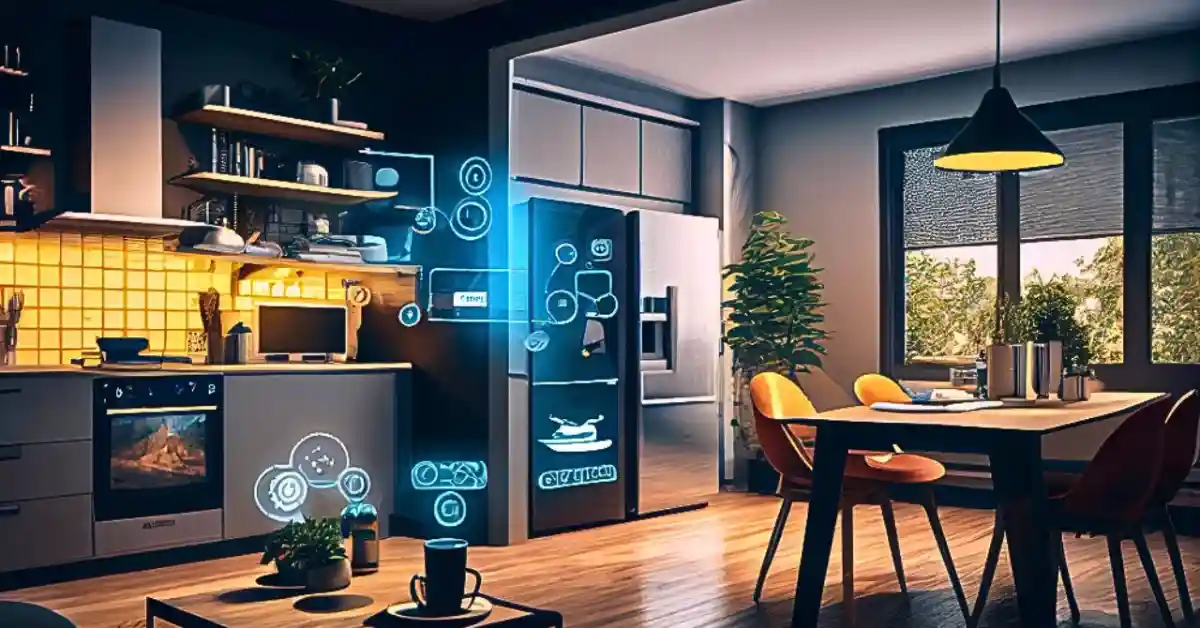What Are Smart Home Upgrades?
Smart home upgrades are AI-powered devices and automation systems that improve security, comfort, and energy efficiency. These upgrades range from smart thermostats and lighting to AI-powered appliances and EV chargers.
💡 Quick Answer (AEO): In 2025, the best smart home upgrades include AI assistants, energy-saving devices, and security systems, costing between $100–$2,000 per upgrade.
Why Smart Home Upgrades Matter in 2025
- Energy Savings: Smart thermostats can cut heating/cooling bills by up to 20%.
- Home Value Boost: Smart homes sell 5–10% faster than non-smart homes.
- Convenience: AI assistants manage lighting, appliances, and security with voice commands.
- Sustainability: Solar integration and smart EV chargers reduce carbon footprint.
- Insurance Discounts: Homes with security + smart monitoring may qualify for 5–15% lower premiums.
Popular Smart Home Upgrades in 2025
1. Smart Thermostats
- AI learns user habits.
- Adjusts temperature for comfort & savings.
- Average cost: $200–$300.
2. Smart Lighting Systems
- LED bulbs with app/voice control.
- Color customization for mood and ambiance.
- Average cost: $150–$500 (whole home).
3. Smart Appliances
- Refrigerators with AI grocery tracking.
- Ovens that sync with recipe apps.
- Washers/dryers with water + energy efficiency.
- Cost: $1,000–$5,000+ depending on appliance.
4. Smart Locks & Security
- Remote door lock/unlock.
- Integration with cameras.
- Cost: $150–$300 per lock.
5. Smart Energy Solutions
- EV chargers with scheduling.
- Solar battery storage integration.
- Energy monitoring systems.
- Cost: $500–$2,500.
Cost of Smart Upgrades in 2025
| Upgrade Type | Avg. Cost (2025) | Savings/Benefit | Best For |
| Smart Thermostat | $200–$300 | 10–20% energy savings | All homes |
| Smart Lighting | $150–$500 | Ambiance + convenience | Apartments, houses |
| Smart Lock | $150–$300 | Security & remote access | Families, travelers |
| Smart Appliance | $1,000–$5,000+ | Time + energy savings | Large households |
| EV Smart Charger | $800–$1,500 | Lower charging costs | EV owners |
| Solar Battery + Storage | $2,000–$5,000+ | Energy independence | Solar homes |
Best Smart Home Devices in 2025
| Device Type | Top Brand | Best Feature | Price Range |
| Smart Thermostat | Nest Learning | AI energy savings | $200–$250 |
| Smart Lighting | Philips Hue | Full-color customization | $150–$500 |
| Smart Security | Ring Alarm Pro | Alexa integration + monitoring | $200–$1,000 |
| Smart Appliances | Samsung SmartThings | AI-driven fridge & oven | $2,000–$5,000 |
| EV Charger | Tesla Wall Connector | Smart scheduling | $800–$1,200 |
Benefits of Smart Home Upgrades
✅ Pros
- Lower energy bills.
- Increased home resale value.
- Insurance premium discounts.
- Greater convenience.
- Sustainability and eco-friendliness.
❌ Cons
- Upfront costs can be high.
- Wi-Fi dependency.
- Privacy/security concerns.
- Some upgrades require professional installation.
DIY vs Professional Installation
- DIY: Thermostats, smart locks, lighting kits.
- Lower cost.
- Quick setup.
- Flexible for renters.
- Professional: Whole-home automation, solar battery storage, EV chargers.
- Higher cost.
- Safer and more reliable.
- Best for homeowners.
Smart Upgrade Trends in 2025
- AI-powered appliances that predict maintenance.
- Voice + Gesture controls (hands-free).
- Integrated solar storage for energy independence.
- Smart EV charging hubs connected to home energy grids.
- Predictive home automation that adapts to lifestyle changes.
Are Smart Upgrades Worth It in 2025?
Yes. Smart upgrades provide energy savings, convenience, and long-term home value. For most households, investing $1,000–$5,000 in key smart devices pays for itself in 3–5 years through savings and property appreciation.
Conclusion
Smart home upgrades in 2025 are no longer luxuries, they’re must-have investments for energy savings, security, and comfort. From thermostats to EV chargers, these devices transform houses into AI-powered smart ecosystems that save money while adding long-term value.







